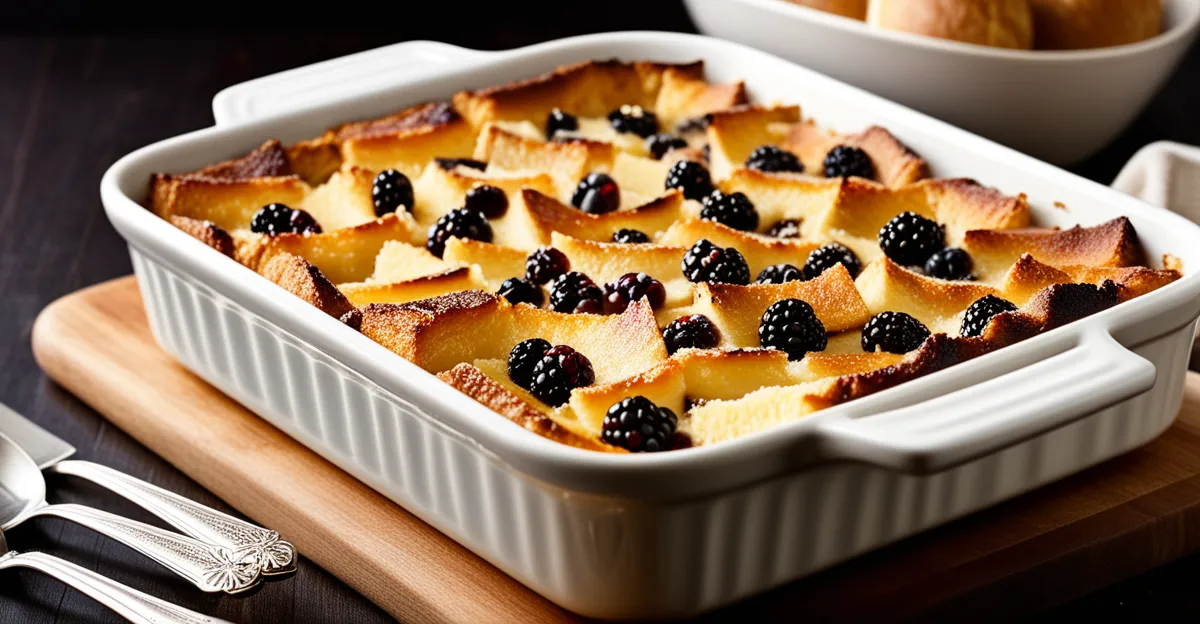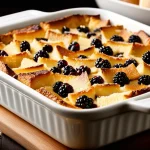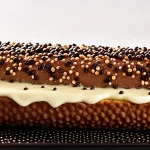Essential Ingredients and Equipment for Bread and Butter Pudding
Understanding the ingredients for creamy bread and butter pudding is crucial to achieving that coveted smooth texture and rich flavor. A classic bread and butter pudding recipe calls for dairy elements such as whole milk and heavy cream to provide creaminess. Eggs act as the binding agent, delivering structure, while sugar sweetens the custard matrix. Spices like nutmeg or vanilla extract enhance depth and aroma.
Selecting the best bread for bread pudding greatly influences the pudding’s texture. Brioche and challah, both enriched breads with a tender crumb, soak custard beautifully without falling apart. White bread also works well, but slightly stale slices are optimal since they absorb liquid better, preventing sogginess.
Also read : What are the best practices for making a classic toad in the hole?
Successful preparation is impossible without the right kitchen tools for baking pudding. Essential equipment includes a sharp knife for precise slicing, a butter knife or brush to spread butter evenly on the bread, and a deep baking dish, preferably ceramic or glass, which distributes heat uniformly. A whisk is needed to mix custard ingredients smoothly, ensuring homogeneity for perfect soaking. These elements together build the foundation for a luscious bread and butter pudding recipe.
Preparing the Bread and Creating Layers
Proper preparation of bread for pudding is key to texture and flavour. Begin by slicing the bread—brioche, challah, or well-staled white bread—in even thickness, about 1 to 1.5 cm. This ensures consistent soaking and baking. Next, spread a thin layer of butter on each slice; buttered bread pudding develops richer taste and a golden crust without becoming soggy.
Also to discover : How can you craft a deliciously rich spotted dick pudding?
The bread layering technique involves arranging these buttered slices in a deep baking dish in overlapping layers. Slightly offset the slices to create pockets that allow the custard to seep thoroughly. This layering maximizes creaminess by balancing soaked and slightly firmer textures within the pudding.
To enhance flavour and variety, incorporate dried fruits such as raisins or apricots between layers. Adding chocolate pieces or even nuts can enrich the taste profile, creating delightful bursts of sweetness or crunch within the soft pudding. This approach not only adds texture but also elevates the overall eating experience.
Attention to detail in slicing and assembling bread pudding creates the foundation for a harmonious balance of creamy custard and tender bread, leading to a perfectly textured dessert.
Crafting a Smooth Custard Mixture
Creating the custard for bread pudding is pivotal to achieving that ideal creamy texture. Begin with a creamy custard recipe combining eggs, whole milk, and heavy cream. Whisk the eggs thoroughly until smooth before gradually adding dairy to ensure a uniform blend without curdling. Sugar is added here to sweeten, typically granulated or caster sugar, adjusting to taste.
Adding flavor layers enhances the custard’s appeal. Vanilla extract is a classic choice, infusing warmth and aroma. A pinch of nutmeg lends subtle spice low enough not to overwhelm. For a fresh twist, zest of lemon or orange can brighten the mixture.
The key to a rich custard lies in the balance of eggs and dairy and consistent whisking. Over-whisking eggs alone risks incorporating air that affects texture, while under-mixing may yield streaks or clumps. Aim for a pale yellow, velvety liquid that coats the back of a spoon. This smooth custard mixture soaks evenly through the layered bread without oversaturating, ensuring each bite holds sumptuous moisture and structure. Mastering this step transforms basic ingredients into the luscious heart of your bread and butter pudding recipe.
Baking Techniques to Achieve Creaminess
Achieving a perfectly creamy bread and butter pudding depends heavily on precise baking techniques. Baking bread and butter pudding requires a moderate oven temperature, typically around 160–170°C (320–340°F). This ensures gentle cooking, allowing the custard to set slowly without curdling or drying out. Too high a heat risks overbaking, causing a rubbery texture instead of a luscious creaminess.
A crucial method is using a bain-marie, or water bath, for pudding. Placing the baking dish inside a larger pan filled with hot water creates an even, moist heat environment. This regulates temperature fluctuations and prevents the edges from baking too quickly while the centre remains undercooked. The bain-marie promotes a smooth custard throughout, essential for the signature creamy consistency in a bread and butter pudding recipe.
Timing matters too. Bake until the custard is just set but still slightly wobbly in the middle—usually 35 to 45 minutes depending on oven and dish size. Overbaking solidifies the custard, compromising richness. To test doneness, insert a knife; it should come out almost clean with a slight custard coating.
Mastering these baking nuances transforms basic ingredients and kitchen tools for baking pudding into a decadent, melt-in-the-mouth dessert.
Ingredient Variations and Creative Additions
Exploring bread pudding variations can transform your classic bread and butter pudding recipe into an entirely new experience. Swapping traditional whole milk or heavy cream for alternatives such as almond milk, coconut cream, or oat milk offers different levels of richness while catering to dietary preferences. These ingredient swaps preserve creaminess but introduce unique flavor notes.
For breads, while brioche, challah, and white bread remain the staples, experimenting with sourdough or cinnamon swirl bread can add interesting texture and taste. These varieties soak custard differently, resulting in distinctive crumb structures.
To elevate flavor, many cooks add spices beyond nutmeg and vanilla, such as cinnamon, cardamom, or even ground ginger. A splash of liquor—like bourbon, rum, or orange liqueur—adds warmth and complexity. Flavor syrups, like maple or honey, can be drizzled into the custard or layered between bread slices for extra sweetness and moisture.
Fruits, nuts, or chocolate pieces offer delightful mix-ins. Fresh berries or dried fruits like apricots and raisins infuse bursts of tanginess or chewiness. Combining textures with walnuts or almonds provides crunch contrast, while chocolate chunks melt into luscious pockets.
These creative additions and ingredient variations enable home bakers to customize their bread and butter pudding, making each recipe uniquely satisfying and exciting.









